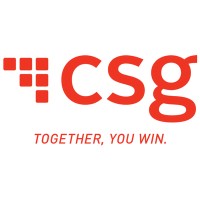Or listen in your favorite podcast app
Apple Podcasts / Google Podcasts / Spotify
As the Senior Vice President of Product for Conga, Eric Carrasquilla knows two things: No. 1 products can fundamentally change the workflow of any business. And No. 2, more times than not, customers will tell you what they need, even if they don’t necessarily know how to describe it.
“We keep going back to this Apple example, the famous one related to the iPod… No one asked for your entire music catalog in a deck of cards. They asked for a bunch of other stuff. But Steve Jobs, being able to come back and say, ‘I understand the problem you’re trying to solve.’ You don’t want to lug all this stuff around and it’s difficult to go through and do, so what about this?’ And having people go, ‘Oh, yes, it’s what I need. And didn’t know what to ask for.’”
That’s the challenge faced by anyone in the business of product development: to deliver revolutionary products and services, without having to be asked to do so. On this episode of IT Visionaries, Eric details how his team goes about meeting that challenge by developing services with the customer experience at the forefront. Plus, he explains the importance of working hand-in-hand with your developers.
Main Takeaways
- Might Not Be the Product they Want, But it’s the Product They Need: One of the defining features of any company is how it listens and gathers information from its clients. When it comes to product development, this is key. Your clients might not always be able to convey to you the exact problem they need to be solved, but through discovery, research, and multiple conversations, similar themes will begin to emerge that will help your product team understand what needs should be addressed.
- This isn’t Monopoly: As a product team, it’s important to understand that your department does not have a monopoly on good ideas. Remember, ideas can come from all departments — clients, R&D, product, etc.. Don’t back yourself into a corner and think that only your team knows how to solve problems. Siloed and structured approaches rarely succeed.
- Acquired Remotely: When you are going through an acquisition, the first thing you need to ask yourself is how do our products complement each other? What areas of the acquiring company are useful and how can we integrate those into our network? When you are doing this in a remote environment, communication is of the utmost importance. You should be constantly over communicating with your teams to make sure you are achieving the best result, but also making the transition as easy as possible.
—–
For a more in-depth look at this episode, check out the article below.
As the Senior Vice President of Product for Conga, Eric Carrasquilla knows two things: No. 1 products can fundamentally change the workflow of any business. And No. 2, more times than not, customers will tell you what they need, even if they don’t necessarily know how to describe it.
“We keep going back to this Apple example, the famous one related to the iPod… No one asked for your entire music catalog in a deck of cards. They asked for a bunch of other stuff. But Steve Jobs, being able to come back and say, ‘I understand the problem you’re trying to solve.’ You don’t want to lug all this stuff around and it’s difficult to go through and do, so what about this?’ And having people go, ‘Oh, yes, it’s what I need. And didn’t know what to ask for.’”
That’s the challenge faced by anyone in the business of product development: to deliver revolutionary products and services, without having to be asked to do so. On this episode of IT Visionaries, Eric details how his team goes about meeting that challenge by developing services with the customer experience at the forefront. Plus, he explains the importance of working hand-in-hand with your developers.
Conga provides efficient digital document management with the goal of increasing a company’s bottom line. Its end-to-end solutions are designed to make collaboration across departments seamless, while expediting workflows. Carrasquilla said consumers should think of three main pillars when they think of Conga: value-added for sales teams, legal efficiencies developing and distributing contracts, and revenue generation, such as the ability to quickly generate invoices. Those three areas work together to create a complete customer experience that is designed to alleviate the headaches that come in day-to-day work. But Carrasquilla said Conga is for everyone: from the individuals starting their business out of their garage, to those with thousands of employees.
Recently, Conga has undergone a big change, merging with Apptus, a similar company that Carrasquilla said already possessed many of the same customers. While Carrasquilla has been through many mergers during his time with Conga, he said this one was unique in the aspect that he was trying to integrate all the products and services that Apptus had to offer, all while working remotely. So what are some of the key things to look for when you’re integrating and building new products? It all starts with understanding the problem the customer is trying to solve.
“What I’ve found is that if you really focus on the problem that the customer’s trying to solve, they’re fairly aligned with what those problems are that may manifest in a different kind of request,” he said. “ If you can focus on [understanding the problem] and go back to the customer and say, ‘Hey, what I’m delivering to solve, it might not necessarily have been the thing that you asked for, but it’s something that surprises and delights you and makes your life better.”
While it sounds simple to just listen to what the market may be telling you, Carrasquilla said that oftentimes solutions are ideated through numerous conversations that take place on advisory boards, in one-to-one interactions with customers, and then actual planning.
One of the key products that have come out of ideation sessions isConga Max, a conversational intelligence tool that allows users to quickly look up quotes and fields, email proposal alerts, and perform follow-up actions.
“One of the team members came through and said, ‘What if we did a virtual assistant?’” Carrasquilla said.“And the feedback was you can’t do that because no one is going to read an agreement all the way through. Then we went through with customers and what we found was there’s a series of very high frequency, very low complexity things that you can get away with with Max on. It’s about going through that ideation, iteration, and really asking the tough questions up front so you don’t end up with a science project versus something that’s really going to drive value for customers.”
Ideation and interaction are integral to any brainstorming session, but Carrasquilla was quick to mention product people don’t have a monopoly on all good ideas. ather, ideas can come from all departments.
“Let me start with the way not to [operate] and what not to do which is to think that within the product team you have a monopoly on good ideas and to throw direction over the wall and treat the R&D teams as something less than a complete partner,” he said. “What I’ve found is we don’t have a monopoly on good ideas. Some of the best ones come from the developers… There are no bad ideas, but let’s, let’s just go through and iterate. I’ve found much better results with this process than versus a more siloed, structured, and rigid environment.”
To hear more about the Conga and Apptus merger, and how to best integrate new products and services, check out the full episode of IT Visionaries.
—
To hear the entire discussion, tune into IT Visionaries here.




